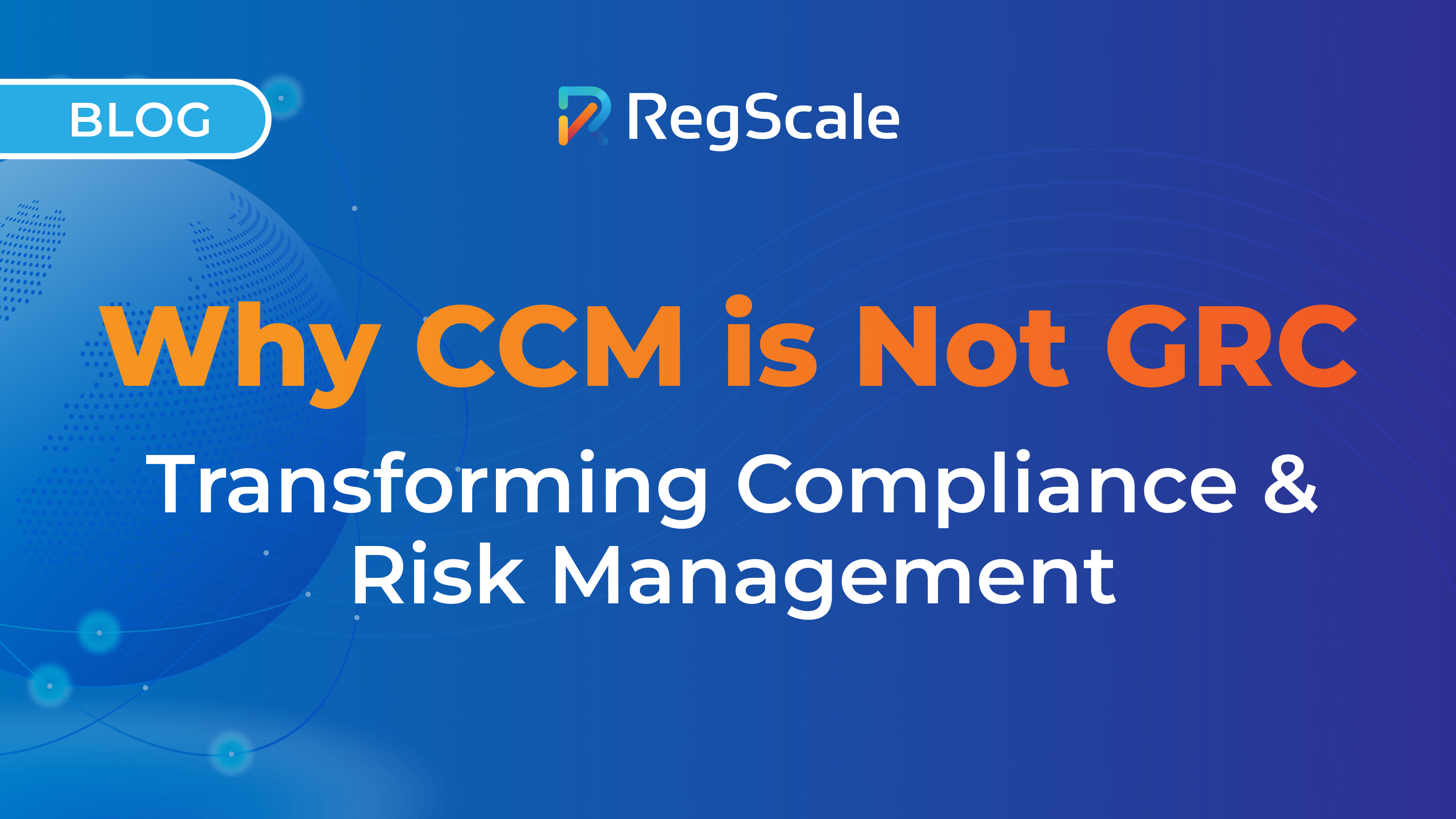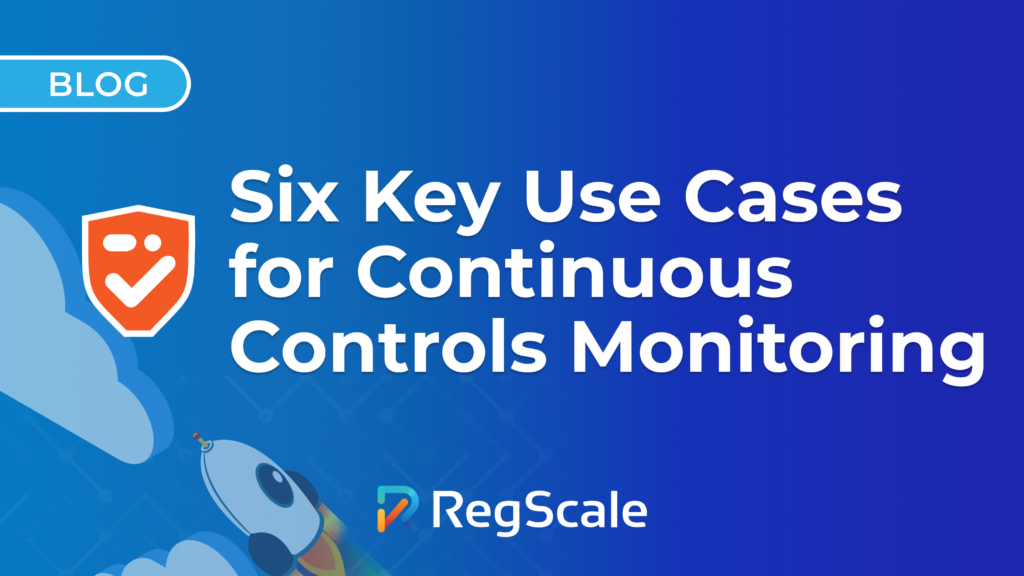Governance, risk, and compliance (GRC) have long been the cornerstone of organizational operations, ensuring that enterprises adhere to regulatory standards and effectively manage risks. However, as technology continues to evolve at a staggering pace, traditional GRC tools and methods often fall short in meeting the dynamic and perpetual nature of modern compliance and risk activities. Gartner studies show that integrating hyper automation technologies with modernized operational processes can reduce operational costs by 30%. The inefficiencies and manual nature of traditional GRC tools often lead to a significant increase in compliance costs.
Enter Continuous Controls Monitoring (CCM), a transformative approach that outperforms traditional GRC in speed, efficiency, and effectiveness. We’re here to help you explore why CCM is not just another GRC offshoot, but a solution that addresses the inherent shortcomings of traditional GRC systems.
Where traditional GRC falls short
Traditional GRC systems are built around static, manual processes that struggle to keep pace with the fast-moving technological environments. These outdated methods often lead to inefficiencies and increased risks, making it difficult for organizations to remain compliant in a dynamic landscape.
Here are a few of the key limitations of traditional GRC:
- Slow: GRC solutions are inherently slow in delivering compliance outcomes. They rely on periodic audits and manual data collection, which struggle to keep pace with the transient, fast-paced nature of modern tech and business sectors.
- Expensive: Deploying and maintaining GRC systems is expensive. They require significant investment in terms of development costs, dedicated teams, and ongoing updates to keep pace with evolving risk and compliance demands.
- Manual By Design: Traditional GRC tools depend heavily on manual processes, which are prone to errors and inefficiencies. As a result, these manual efforts often lead to delays, increased workloads, and the potential for oversight in compliance activities.
- Reactive Nature: GRC systems typically operate reactively, addressing compliance issues only after they arise, rather than proactively managing risks and ensuring continuous compliance.
Why CCM is different
CCM addresses the limitations of traditional GRC systems—such as slow compliance processes or creation of compliance artifacts, high costs, and manual efforts—by leveraging automation, AI, and real-time monitoring. CCM transforms compliance from a reactive, labor-intensive task into a proactive, efficient, and cost-effective solution, ensuring your organization stays ahead of regulatory changes. Here’s what sets CCM apart:
Speed and efficiency
RegScale’s CCM platform accelerates compliance processes by automating the collection, validation, and reporting of compliance data. This automation can reduce audit preparation time by up to 60%. Recently, a military agency using our platform significantly reduced their compliance timelines, slashing over 36 weeks off their Authority to Operate (ATO) process. By leveraging our innovative AI-driven compliance tools, they achieved rapid certification and maintained continuous compliance, enabling quick integration of new cloud solutions.
Cost reduction
By automating manual processes and integrating seamlessly with existing IT, security, and risk tools, CCM reduces the cost of compliance. Organizations can achieve significant savings by minimizing manual labor and reducing the need for expensive external audits.
Automation and AI
CCM utilizes AI-driven capabilities to automate critical compliance processes. This includes identifying compliance issues, suggesting corrections, and providing continuous feedback. Automation and AI not only enhance efficiency but also improve accuracy and substantially reduce the risk of human error.
Proactive risk management
Unlike traditional GRC systems, CCM provides real-time monitoring and continuous assessment of compliance controls. This proactive approach ensures that compliance issues are identified and addressed before they escalate, enabling organizations to maintain a robust security posture.
Key features of CCM
CCM brings a modern approach to compliance, surpassing the limitations of traditional GRC systems. By leveraging automation to achieve continuous oversight, CCM ensures a proactive and efficient compliance strategy that is scalable and cost efficient, all while ensuring organizations are prepared to handle the unexpected.
Here are the key features that make CCM superior:
Real-time compliance artifacts
CCM platforms generate compliance artifacts in real-time, ensuring organizations are always audit-ready. This process includes the automated creation of System Security Plans (SSPs) or other compliance artifacts, evidence gathering, and validation.
Seamless integration
CCM integrates seamlessly with existing IT and security infrastructure, enhancing collaboration and reducing manual errors. By supporting cross-functional collaboration through integration with ITIL tools such as Jira and ServiceNow, it streamlines the remediation process for compliance findings.
AI-driven capabilities
Leveraging AI-driven capabilities, CCM performs critical tasks such as explaining, authoring, extracting, and auditing compliance, risk, and security controls. This intelligent automation speeds up and improves the accuracy of generating compliance artifacts, making the entire compliance process more efficient.
End-to-end automation
CCM automates the entire compliance lifecycle, from package generation to evidence collection and validation. This comprehensive automation includes conducting AI-powered audits, generating compliance packages, and maintaining a constant state of readiness for audits and regulatory exams. By offering real-time insights and automated processes, CCM transforms compliance management into a proactive and efficient operation.
CCM: The Future of Efficient Risk and Compliance Management
CCM is not just an evolution of traditional GRC tools but a revolutionary approach that transforms how organizations manage compliance and risk. By leveraging automation, AI, and real-time monitoring, CCM addresses the inherent shortcomings of traditional GRC systems, providing a faster, more efficient, and cost-effective solution.
Are you ready to see how CCM can change your compliance strategy for the better? Download our solutions brief, “Automation & CCM: Generate GRC Outcomes” to learn more about how CCM can enhance your compliance efforts and help you stay ahead in today’s dynamic world of regulation and compliance.
Ready to get started?
Choose the path that is right for you!
Skip the line
My organization doesn’t have GRC tools yet and I am ready to start automating my compliance with continuous monitoring pipelines now.
Supercharge
My organization already has legacy compliance software, but I want to automate many of the manual processes that feed it.

